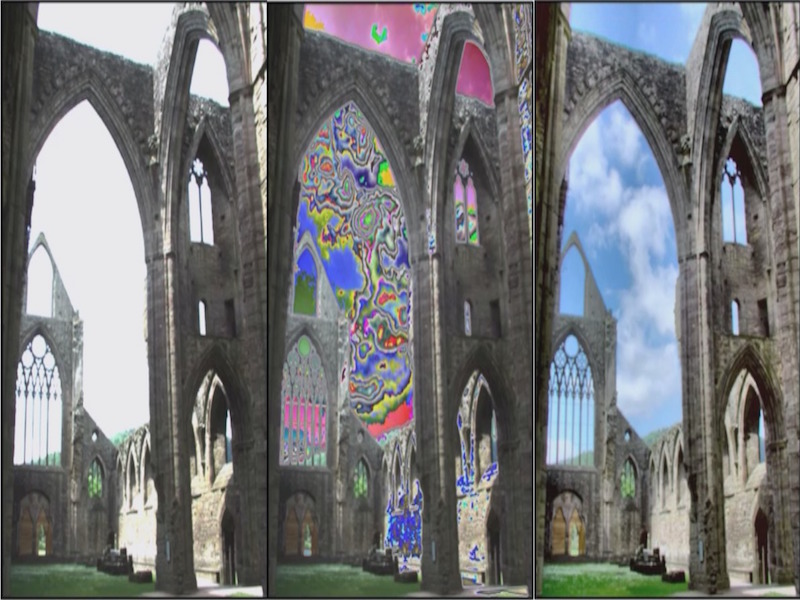- Home
- Cameras
- Cameras News
- MIT Develops Real Time HDR Camera, Algorithm to Prevent Overexposure
MIT Develops Real-Time HDR Camera, Algorithm to Prevent Overexposure

Everyone hates washed-out spots in images but there isn't much that could be done to prevent it as of today. Things might be different in the future, however. MIT researchers believe that they have found a way to weed out overexposed elements from pictures, using HDR-like technology without the limitations.
Several smartphones come equipped with HDR technology which reduces the washed-out spots by offering a wide dynamic range. But MIT has a better solution. The researchers have combined the next-generation camera hardware called "modulo camera" with new image-processing algorithm to get rid off overexposed spots.
The researchers claim that modulo camera is designed to never overexpose an image. Created in a collaboration between Media Lab's Camera Culture group, MIT Lincoln Lab, and Singapore University of Technology and Design, the modulo camera requires only one shot to create an HDR image, compared to today's widely used HDR sensors that require many photos to be taken. The current HDR technology also requires one to keep the camera still while taking a shot, and if done incorrectly can produce blur and other artefacts.
With the modulo camera and the new image-processing algorithm, the researchers have essentially created what they call a 'real-time HDR' camera that removes the hassle of HDR photography completely, from correctly choosing aperture to exposure length, and keeping the camera steady.
The other issue in overexposure is light, or its abundance to be precise. Conventional camera sensors can only accept certain amounts of light because of limited "well capacity," the amount of light an individual pixel can hold. Compared to that, modulo camera resets the sensor capacitors every time the "well" gets full. It further makes use of "an inverse modulo algorithm to calculate how much light the reset sensors took in," the news release said.
"For example, if a certain camera sensor can record eight bits of information, then when those eight bits are filled, the capacitor will be reset to zero. The number of resets is recovered by the algorithm, which then calculates the relative brightness of each area of the photo," the researchers explained, adding the technology can be used for computer vision and astronomy, or any field that deals with bright and low-light sources.
Sadly, this technology isn't available in current digital and smartphone cameras. And there's no word yet on when we can expect this on our devices. But what's exciting is that many companies are working to take the existing camera technologies to the next level. Earlier in August, MIT and Google had partnered to make an algorithm that removes reflections and obstructions from an image.
Get your daily dose of tech news, reviews, and insights, in under 80 characters on Gadgets 360 Turbo. Connect with fellow tech lovers on our Forum. Follow us on X, Facebook, WhatsApp, Threads and Google News for instant updates. Catch all the action on our YouTube channel.
Related Stories
- Samsung Galaxy Unpacked 2025
- ChatGPT
- Redmi Note 14 Pro+
- iPhone 16
- Apple Vision Pro
- Oneplus 12
- OnePlus Nord CE 3 Lite 5G
- iPhone 13
- Xiaomi 14 Pro
- Oppo Find N3
- Tecno Spark Go (2023)
- Realme V30
- Best Phones Under 25000
- Samsung Galaxy S24 Series
- Cryptocurrency
- iQoo 12
- Samsung Galaxy S24 Ultra
- Giottus
- Samsung Galaxy Z Flip 5
- Apple 'Scary Fast'
- Housefull 5
- GoPro Hero 12 Black Review
- Invincible Season 2
- JioGlass
- HD Ready TV
- Laptop Under 50000
- Smartwatch Under 10000
- Latest Mobile Phones
- Compare Phones
- Realme P4x 5G
- OnePlus Ace 6T
- OPPO A6x 5G
- Samsung Galaxy Z TriFold
- Poco F8 Ultra
- Poco F8 Pro
- Huawei Mate 80 RS Master Edition
- Huawei Mate 80 Pro Max
- Asus ProArt P16
- MacBook Pro 14-inch (M5, 2025)
- Poco Pad M1
- Poco Pad X1
- Just Corseca Skywatch Pro
- Honor Watch X5
- Acerpure Nitro Z Series 100-inch QLED TV
- Samsung 43 Inch LED Ultra HD (4K) Smart TV (UA43UE81AFULXL)
- Asus ROG Ally
- Nintendo Switch Lite
- Haier 1.6 Ton 5 Star Inverter Split AC (HSU19G-MZAID5BN-INV)
- Haier 1.6 Ton 5 Star Inverter Split AC (HSU19G-MZAIM5BN-INV)

















